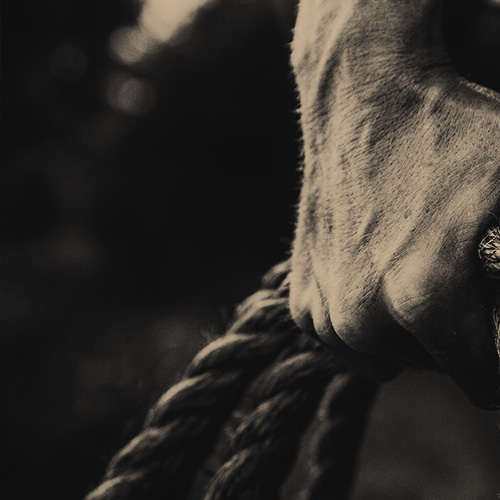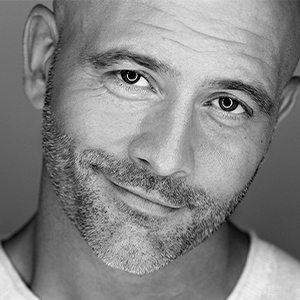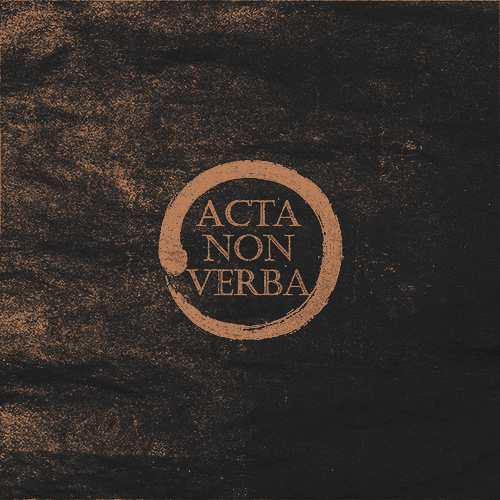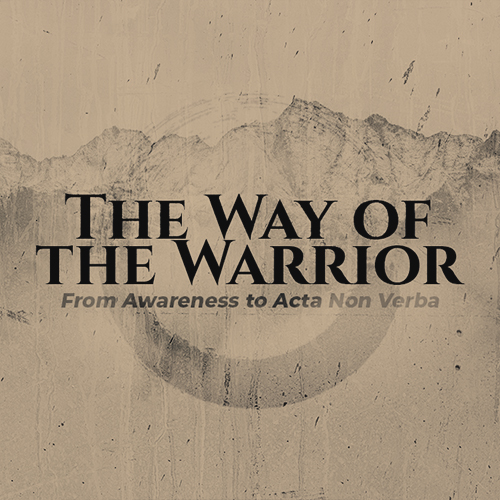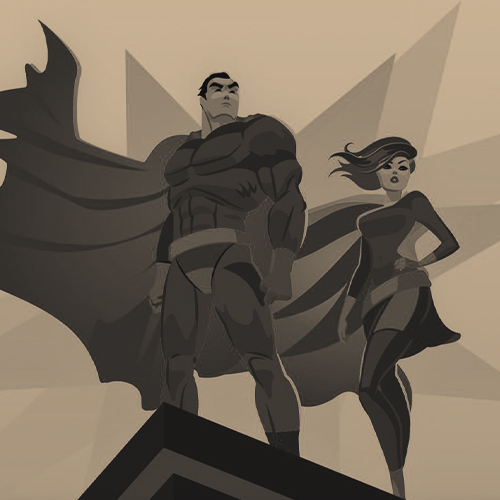In this episode Marcus Aurelius Anderson delves into the theme of endurance, drawing lessons from historical and contemporary figures. He discusses the incredible resilience of Sir Ernest Shackleton and his crew during the Trans Antarctic Expedition, and highlights how modern-day warriors like Juan Pablo Quiñonez and Dean Stott overcame extreme challenges through endurance. Marcus outlines two key steps to building real-world endurance: setting a huge goal with a compelling why and training harder than ever before.
Episode Highlights:
03:24 Lessons from Sir Ernest Shackleton
06:52 Juan Pablo’s Unconventional Strategies
09:09 Dean Stott’s Record-Breaking Journey
09:51 Steps to Building Real-World Endurance
Episode Transcript:
00:02
Acta Non Verba is a show that’s raw and real, featuring hard-hitting interviews with people that live by the ethos of actions, not words. Marcus Aurelius Anderson is a TEDx speaker, best-selling author, veteran, and leadership and mindset coach. With this show, you get to join Marcus as he goes inside the minds and experiences of the world’s most successful warriors, leaders, entrepreneurs, and experts. With each episode, you’re going to get the philosophies, concepts, tactics, and strategies these leaders use
00:32
to turn adversity into victory. Live an extraordinary life based on actions, not words. Now, here’s your host, Marcus Aurelius Anderson. Endurance is one of the most difficult disciplines, but it is to the one who endures that the final victory comes, said Haritha Gutama. If it is endurable, then endure it, stop complaining, sees Marcus Aurelius.
01:02
It is easier to find men who will volunteer to die than to find those that are willing to endure adversity with patience. Julius Caesar. By endurance, we conquer. Sir Ernest Shackleton, captain of the Endurance during the Trans-Antarctic Expedition. One of the most important attributes that any warrior and leader needs is endurance. In this Warrior Wisdom episode, I’m going to unpack what that actually means.
01:31
using world examples that will teach you how to build functional endurance in every area of your life. I’m Marcus Aurelius Anderson, and this is another installment of Octonavirba’s Warrior Wisdom. In these shorter solo episodes, I’ll highlight lessons from warriors past and present in all kinds of settings from the battlefields of Italy, Greece, Japan, and the Middle East to more modern-day warfare, including tactics seen today in business, society, and culture.
02:00
I’ll also be sharing leadership lessons based on my own teachings and experiences. The reality is this, the world is a battlefield, and to not master these lessons, please be grossly ill-prepared for the adversity that you’ll inevitably face in the future. Now on to the lesson. Over the last 230 plus shows, endurance has been a common theme. In the episode before this one, Octodon Verba 230, a lone season 9 winner, Juan Pablo V.
02:30
Cunoñes, talked about how he cultivated the mental and physical endurance that helped him endure 78 days and the brutal sub-arctic conditions of Labrador in that season of Alone. On the episode prior to that, ANV 229, Dean Stott, former British Special Forces at the Special Boat Crew, star of the blockbuster Netflix series The Toughest Forces on Earth, and the man that biked the longest road on the planet, the 14,000-mile
03:00
Pan-American Highway, in just 99 days, smashing two world records in the process, while also raising money and awareness for mental health, talks about how he built the endurance, grit, and determination to do what most people call impossible over and over again. And while I’ll come back and speak more about Juan Pablo and Dean, I’m going to start off with some functional endurance lessons from Sir Ernest Shackleton, captain of the aptly named ship, The Endurance.
03:29
and his crew of 27 men that were shipwrecked as they sailed the Imperial Trans-Antarctic Expedition from 1914 to 1917. By endurance we conquer just so happened to be the family motto of Sir Shackleton and perhaps gave some foreboding and foreshadowing to his voyage. The endurance was unable to move through the unyielding Antarctic ice for nearly 10 months before the ship ultimately sank and the entire crew was forced to try to survive.
03:59
living on the open pack ice for another five months in some of the most brutal winter conditions imaginable. Now Shackleton understood immediately that trying to lead the men by simply barking orders from up on high would not be the kind of leadership necessary to keep their morale up and bring them together as a team. Shackleton knew how precarious of a situation that they were really in, and that the morale of the men would literally be the difference between life and death.
04:27
So how do you keep morale high in such a seemingly hopeless situation with no foreseeable way out? You do so by keeping the men so busy that they don’t have time to think about or ruminate on their current adversity of the brutal weather, dwindling supplies, short days, and zero radio contact. He did this by making tea for them himself every morning, by creating a roster of duties for them all to follow, such as hunting for food, moving in organized supplies, rescues from the ship.
04:57
collecting firewood to keep them warm and preparing food. Now he also made it a point to celebrate every holiday and every man’s birthday as if it was the most important day of the year to keep everyone’s spirits high. Shackleton needed to keep himself occupied as well. By being proactive and focused on problem solving, he was able to hide his own doubts and fears from his men by planning every moment of the day to keep everyone on the same page.
05:24
He was intentional about rotating the duties and mixing up the teams often to keep them in from having time to breed discontent or negatively gossip to spread dissent like cancer. Such widespread fear could lead to a mutiny, which would ultimately get them all killed in the process. It was also Shackleton that led a small hand selected crew that would take one of the surviving lifeboats in hopes of securing rescue for the rest of the crew. His destination was South Georgia in hopes of finding a whaler’s camp.
05:54
Now their lifeboat was quickly caught up in the brutal weather, floating ice, and was hit by one of the biggest waves that he had ever seen in his 26 years of sailing. When they finally were able to make their way back to shore to try to recover, Shackleton knew that their only chance of survival was to make a desperate 26-mile trek across the continent. And while their general direction of travel was towards the northwest, they had no map or visibility to know what the interior of this rugged backcountry was.
06:24
This meant that they had to plan their route by conjecture alone. And as you can imagine, this led to multiple missteps and backtracking as the team ended up marching for over 36 hours straight until they could find help to rescue the rest of the endurance crew stranded back on elephant Island. Because of the endurance of the endurance crew and Shackleford’s unwavering leadership, every man made a home alive.
06:52
Another incredible example of endurance comes from Octo-nonverbal guest Juan Pablo Cunoñas. On the History Channel’s Alone Season 9, Juan Pablo spent 78 days in the sub-Arctic lands of Labrador to win half a million dollars on that prize. To do this, he employed some of the most unconventional strategies in Alone’s 10-year history. So what did he do differently? Well for starters, he didn’t boil any of the water that he consumed. None.
07:22
He drank it directly from the lake that was his primary water source. And for context, if you’ve ever watched any survival show like Alone, Naked and Afraid, or Outlast, you’ll see that even those contestants, when they boil water, many will still get some sort of waterborne illness from bacteria that affects human intestines like cholera, E. coli, or Giardia. This is considered a medical emergency, and the contestants are immediately pulled from the show and given medical attention back in civilization.
07:51
How did Juan Pablo drink unboiled water for 78 days straight? He began conditioning himself from a very young age to drink unboiled water because he knew it would be a long-term advantage for survival when he became an adult. This served him well because it led to his second decision that had additional long-term benefits for him. His second unconventional choice was to not keep a fire for most of the challenge. Because Juan Pablo didn’t need to boil his water,
08:19
He only made a fire to cook food, which means he didn’t spend hours collecting wood or cutting down trees to feed the fire day and night. Not only did this save him valuable daylight, it saved him thousands of calories in the process, but not expending them on something that he felt was ultimately an unnecessary luxury. Lastly, when the weather made it difficult to cook your food, he simply decided to fast. His fast lasted over 20 days.
08:49
yet he knew from his prior conditioning that he was strong enough to not eat. He also made peace with the notion that if he truly did feel like he needed to eat, that he could break the fast whenever he pleased. While none of these tactics had ever been done in all of Alon’s history, Juan Pablo had the endurance to win. When Dean Stott set out to break world records as a cyclist, he’d only rode a bike a few times before setting out on the ultra aggressive one-year training program to tackle his huge
09:20
He’d done many things that others considered impossible up to that point already, through his training with British Special Forces and combat deployments. And he knew that while he may not have the specific experience on the bike, he trusted that that mental resilience, grit, and endurance gained from his previous training, as well as his rough and tumble upbringing, he knew that it would translate into the areas that he needed. Dean truly proved that when we have endurance, nothing is impossible.
09:48
It just means that it hasn’t been done yet. So how do we build endurance? Well, you’ll notice the examples that I give in this lesson are from those that were attempting something that’s never been done before. There are essentially two steps to build real-world endurance. And I’m going to go out of order to give you step two first so that you will better understand the significance of step one. The second step to building functional endurance is to train and prepare harder and longer
10:18
than you ever have before. To push your mind, body, and spirit to reach higher levels than you ever thought possible. To face adversity time and again as it tries to break you, then bending it to your will. So what gives us the drive and desire to give everything that we have to this level of training? That’s where step one comes in. Step one to building real-world endurance is this. Set a huge goal with a powerful why.
10:47
that’s much bigger than just you. When Juan Pablo had gone without food for nearly three weeks near the end of a loan, it wasn’t his ego or the prize money that kept him going. It was thinking about his wife, Jennifer, how much he loved and believed in him and how winning would give them the freedom to make their dream of buying land and creating a homestead come true. This was a much bigger why than just him. When Dean Stott had to ride over 300 miles a day,
11:15
To set the pace necessary to break two world records, it was the mission of raising money and awareness for mental health charities, including Heads Together, that made him push on when he was beyond exhausted. His endurance and compelling why pushed him to bike through 14 countries and raise over $1 million in the process. Again, his why was much bigger than just him. When Sir Ernest Shackleton, captain of the Endurance and his crew were shipwrecked,
11:44
It was more than just pride or love of country that kept him going. He knew that the lives of his men literally depended on his endurance to be able to tirelessly lead them and keep their morale up until he was able to find a means of rescue. Indeed, it took endurance for the endurance crew to make it out alive. Clearly Shackleton’s why was much bigger than himself. Setting a huge goal with the compelling why is step one.
12:12
It’s this huge goal and compelling why that creates the drive to execute and sacrifice the way that we need to on step two. With the ability to train and push unlike we’ve ever done for anything else in our life to make this mission a reality. You’re after action items. These action items are simple, but they are not necessarily easy. Again, step one, set a huge goal with a compelling why that’s much bigger than you. Now this may take some time to hone in on. The biggest mistakes that I see people making in this step.
12:42
is setting the bar too low, of setting a goal of something that they already believe that they can achieve, even without any additional effort now. So taking the time, journaling and meditating on this goal will be helpful for you. Take this step seriously, because if you don’t, it won’t drive you. And to add some clarity, listen to me now. This huge goal, with a compelling why that’s much bigger than you, should make you feel
13:11
scared as hell and excited like nothing else ever has. With those parameters, get to work on setting that goal. And then step two, giving absolutely everything that you have in preparing to accomplish that mission. Again, when step one is done correctly, step two takes care of itself. Thus endeth the lesson. If you’ve enjoyed this or any of the other over 230 episodes of Akta Namberba,
13:40
I highly recommend going back through the entire catalog that includes more Warrior of Wisdom episodes like this, as well as the interviews with those that I’ve mentioned in this episode, Juan Pablo Cunugnes and Dean Stott, as well as Outlast contestants Tina Grimm and the two-time Naked and Afraid finisher, Shell Amogida. All of these interviews dive deep into mindset, pushing our physical limits, and building mental resilience to endure anything that adversity throws at you.
14:08
None of these episodes are behind a paywall or a Patreon. For the moment, they’re available for free, so go check out the entire catalog. While you’re there, hit subscribe and tell us what you think about this episode in a review on Spotify, iTunes, or wherever you listen to Octa Nonverba. This helps us attract more listeners and spread the Octa Nonverba message to others. Sharing this lesson on social media and with others gives you tools and tactics that can be used in any team or company environment.
14:38
And if you’d like to get more exclusive content and information regarding the release date of my new Okta Non-Verba book, upcoming live events, the release of the Okta Non-Verba apparel and more, join the Okta Non-Verba Inner Circle for free at Marcus Aurelius Anderson dot com and also check out Okta Non-Verba podcast dot com. Until next time, live a life of actions and not words. Live a life of Acta Non Verba.
